The General Protection Fault 3 High Altitude Balloon
by Bryan A. Thompson
Last Updated 08/21/2011
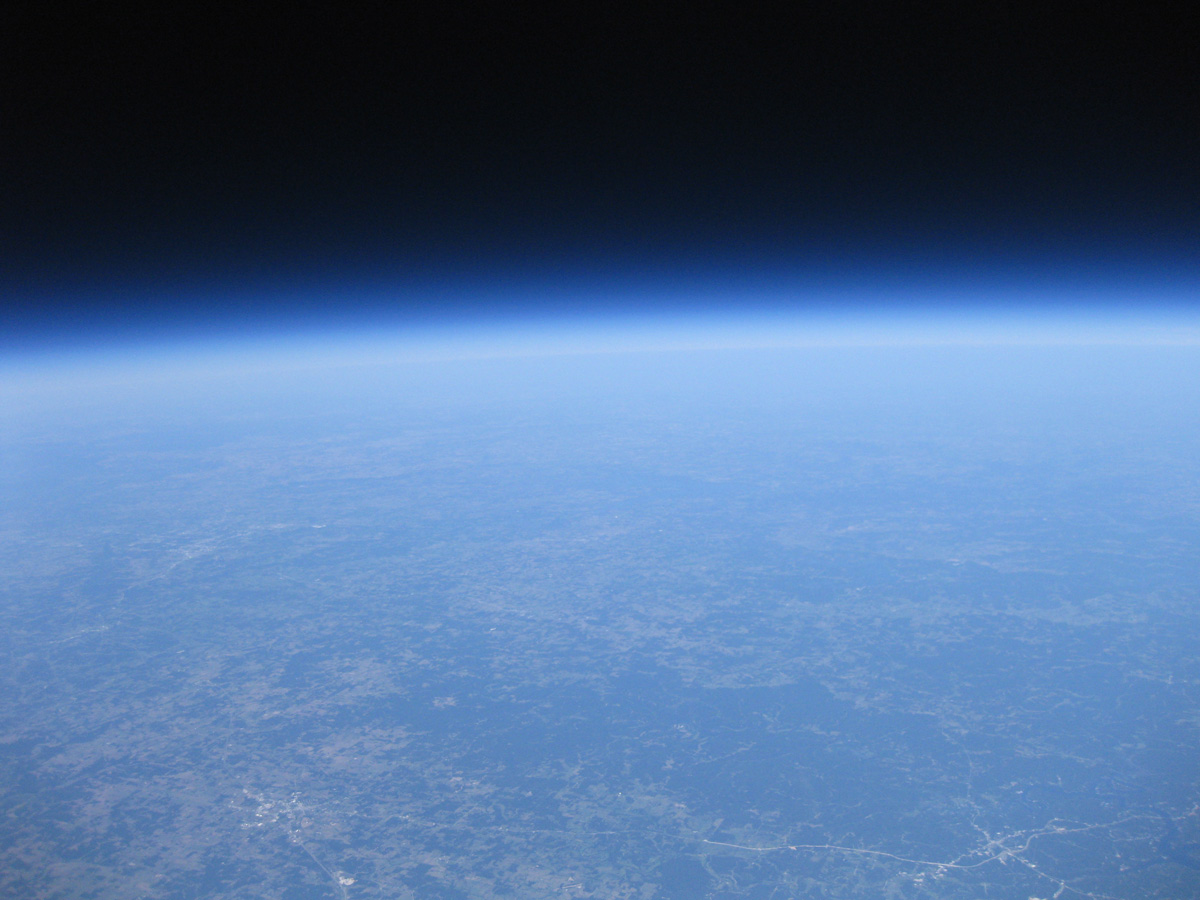
107,854ft above Rolla, aboard the General Protection Fault 3 flight
Post-Flight Update
The flight was successful. The balloon climbed to 107,854ft before burst, the total flight lasted about 2.5hrs, and the capsule landed near our projected landing site near Dixon, MO. In a tree.
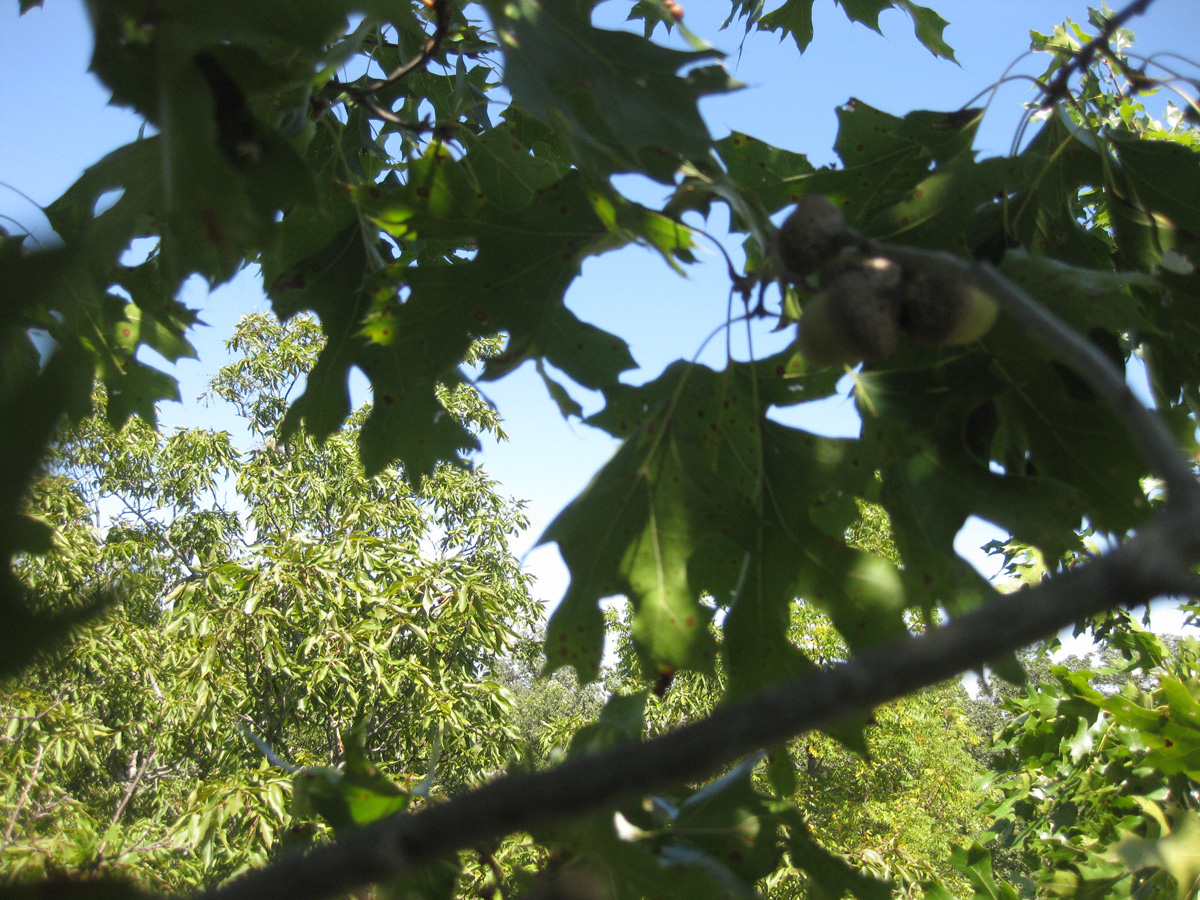
View as seen from the capsule's point-of-view
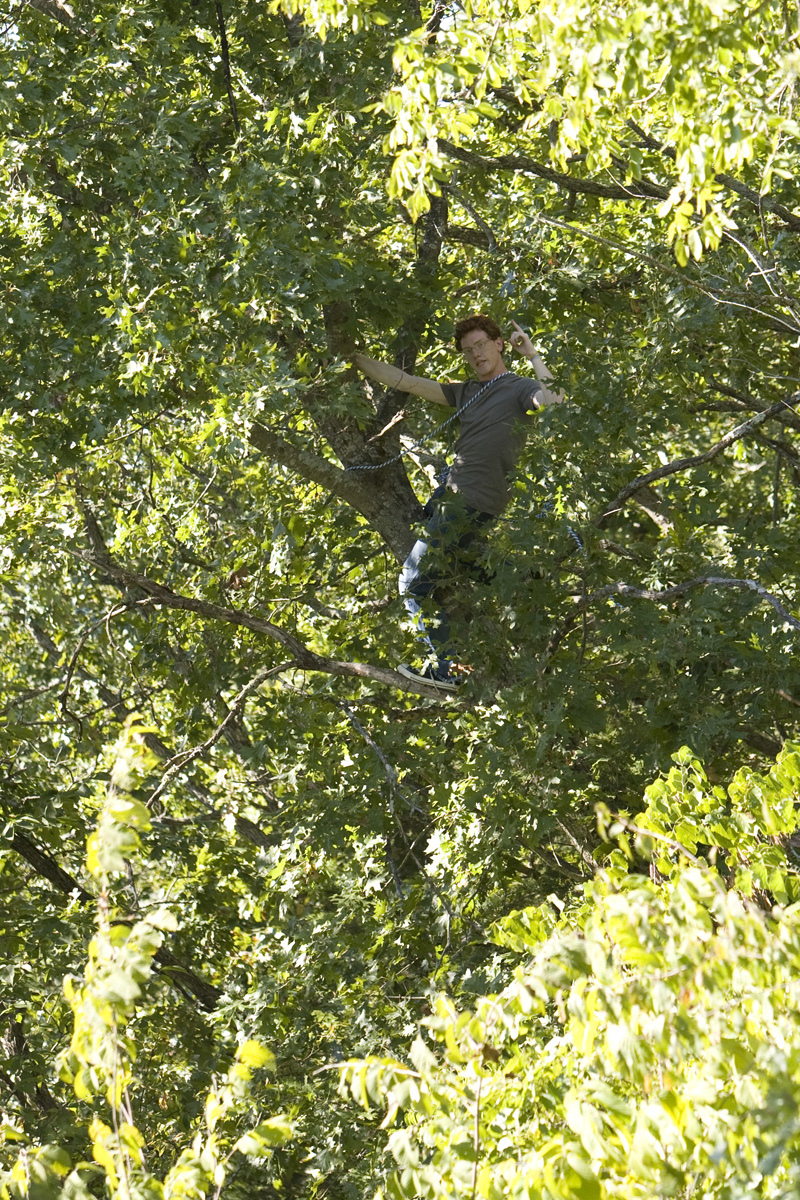
Fortunately it was a climbable tree, and Garrett Moylan risked life and limb to recover the capsule about an hour after we arrived.
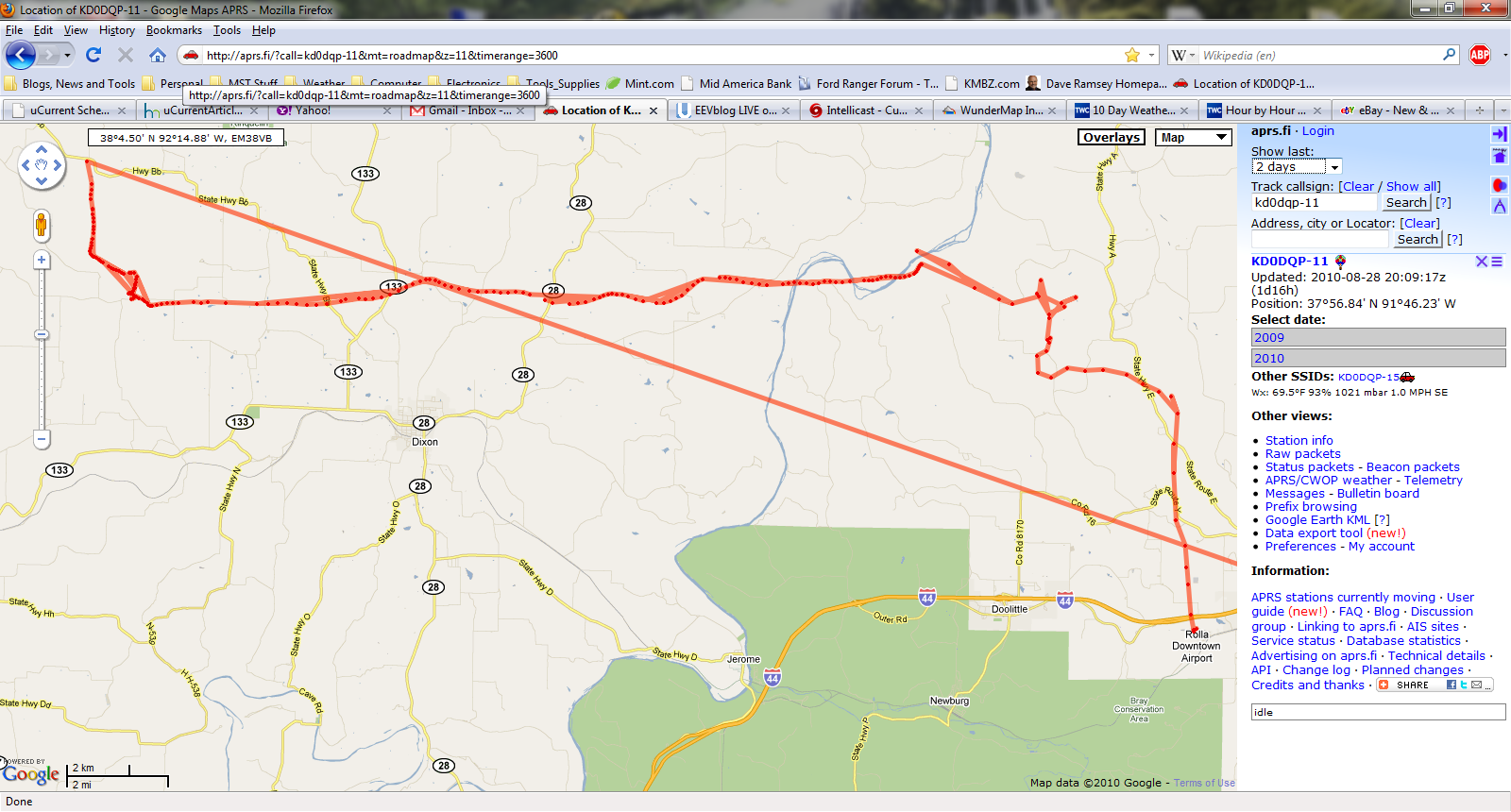
We were able to track the balloon throughout its flight. We predicted that it'd land east of Dixon, and instead it landed a bit west of Dixon.
Click here to see the raw data we captured
More pics tonight (9/2)- I promise!
Thanks again to everyone who helped out along the way!
What?
The primary goals of this mission are to obtain high resolution images from high altitude, and to share the experience with the members of the HackRolla hackerspace.
- We will test our ability to launch a balloon, track it as it ascends to over 100,000ft, and then back to ground level. Hopefully without it sinking or crashing into a tree or littering the launch site with pieces of itself.
- This mission will include a tracking system on the primary chase vehicle, so people at home will be able to follow the action. The balloon will repeat ground traffic to extend range of the ground transmitter.
- The mission will carry a 10Mpix digital camera with upgraded battery and RAM to record the entire flight. The camera is running CHDK firmware with an interval timer script. The camera will now be located outside the capsule to reduce fogging / icing issues we experienced the last flight.
- We will have someone along with a video camera, and if connectivity allows, we'll be broadcasting live here (link to follow).
When and Where?
- 8/28/2010 - Balloon Prep - Meet at 7am at the Rolla Downtown Airport (map)
- 8/28/2010 - Balloon Launch - Expected for 9am at the Rolla Downtown Airport (map)
- 8/28/2010 - Balloon Chase and Recovery - The flight is expected to take ~2 hours. We will relocate to HackRolla (map) after the launch to track the capsule and meet with guests. If you want to come along on the chase, meet us at the airport or HackRolla.

Links?
Progress as of 8/26/2010
- Measured the camera power consumption. Firing one frame a minute and turning the screen off 10secs after the shot causes the camera to draw an average of 120mA. This means our 7AH battery should run for 58.333 hours or 3500 images, whichever comes first.
- Measured the 16GB card capacity to be approx 908 images. This will change with the compressibility of each pic.
- Updated weight budget for the capsule - We're at 1225g.
- Recharged batteries for the run tests this evening.
Progress as of 8/25/2010
We met at HackRolla and talked about our progress, and things that still need to happen.
- We measured the camera run time at 391 shots. We expected more, so we decided to eliminate the strobe light, strobe light voltage regulator, and cables associated with those items. This eliminated over 100g of mass, which will let us extend the camera battery capacity if needed. We also found a way to turn the backlight off 10 seconds after a shot, saving more power.
- Zach Zeman agreed to serve as videographer on the day of the event, and will bring a camera.
- Nathan Neulinger thinks it may be better to leave the OT2 configured to digipeat packets as a way of bringing attention to HackRolla.
- Eric purchased 162 cu ft of Helium for $62.00. We owe him some money for this.
- Nathan Neulinger will bring a chainsaw, folding ladder and pulley on the day of the event.
- Bryan will measure the energy consumption of the camera and update the energy budget. If needed, Bryan will add more cells to the radio battery pack to extend its runtime.
- We learned that the camera does turn itself off when the battery reaches 3.7V, thus protecting the camera battery.
- We're going to try to reconfigure the capsule to digipeat packets, and retest battery runtime, on Thursday evening.
- Nathan Bookout will be along on the day of the event. Mark B will be available to assist with radio communications.
Progress as of 08/21/2010

A View Inside the Capsule - Click Here for more pics
- Radio tests were today. We discovered that the ground tracking vehicle had a limited range outside Rolla. Approximate 4 mile range West of town, and 10 mile range East of town. We bought a better antenna from Radio Shack, but it didn't increase the range at all.
- Discovered that AT&T 3G coverage extends about 4 miles on each side of Rolla. Had extreme problems downloading equipment manuals on Edge network in St Robert, so we borrowed WiFi from a local hotel. Lesson learned: Download the manuals to the laptop in the car.
- The ground tracking system functioned, but we needed a way to extend the range. We plan to reprogram the OpenTracker modem in the balloon to "digipeat" all packets it hears from the chase vehicle.
- The capsule was assembled with a 10 Megapixel camera and extended run battery. The capsule was set outside to do a full length run test. It was about 92 degrees, and the heat prevented continuous transmissions. We thought it might have been RF interference, but when the capsule was placed in air conditioning, it ran for two hours continuously.
- On the way up, the capsule will transmit every two minutes. We decided to reprogram the modem to transmit more frequently above 80,000ft. This will give us more datapoints on the way up, and more importantly, on the way back down.
How?
The balloon and ground trackers use HAM Packet Radio (called APRS) to transmit our position, using a 5W 2M FM radio and special 4800 baud modem. Some repeater stations called iGates are configured to listen for those position reports and then place that data on the Internet. The balloon will also be configured to act as a repeater for the chase vehicle transmissions, as a way of extending our range on the ground.
The callsign we're using for this flight is KD0DQP-11 for the balloon, and KD0DQP-15 for the chase vehicle.
Click Here to see the balloon capsule and ground electronics package
Click here for information on adding a remote shutter release to the Tracker2.
Note: If you're the self-designated radio police, I don't care to hear your interpretation of the law, and I'm not going to waste my time with you. The guy who owns this callsign will be the guy in charge of releasing the balloon, he'll be in the chase vehicle, and he knows what we're doing at all points of the experiment. The reason we're not using my callsign is that I made the decision not to get one - I really don't want normal people mistaking me for being one of you. Call a cop, get a life, and just generally bugger off.
Who?


Eric Sigler and Jennifer Song provided the flight and balloon and parachute, the Helium, a super-incredible harness to securely hold the payload, and the onboard camera, as well as dinner and ice cream on construction and testing nights.
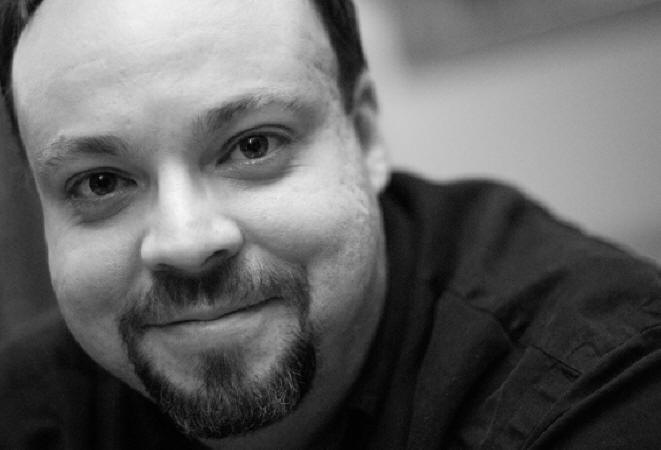
Bryan A. Thompson provided GPSes and modems, designed and built the tracking system, including the custom batteries, voltage regulator board, and about 100 custom cables required to connect all of this stuff!

Ryan Lantzer has written some awesome Perl tracking scripts we're using on the ground tracker. They communicate with GPS and radio modem and dynamically generate a KML file that is plotted in Google Earth. He also assisted with the assembly and testing of the GPS and interconnect cables.


Mark and Nathan Bookout have provided the communications systems and services that we're using, including the air radio.
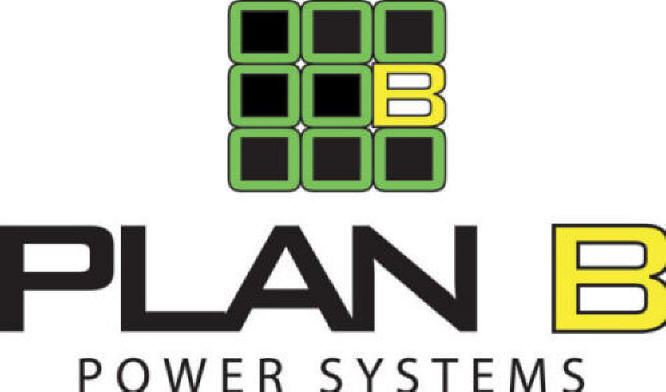
Our friends at Plan B Power Systems (PlanBPower.com) have provided the ground and air batteries, chargers, voltage regulators and power inverters used for the mission.
Why?
Did you ever wonder where the balloons went when you let go of them? Whatever happened to them? I did. So I got the idea to install a tracking device in the balloon to find out where it went, and a camera to capture what it sees along the way.
You know, lots of people ask why we're doing it. And I gotta say - I really don't know. It's been a huge amount of work, but it sure has been fun. Personally, I'm doing it for the adventure of it all. If I get a picture from 100,000ft as a souvenir, so much the better.











